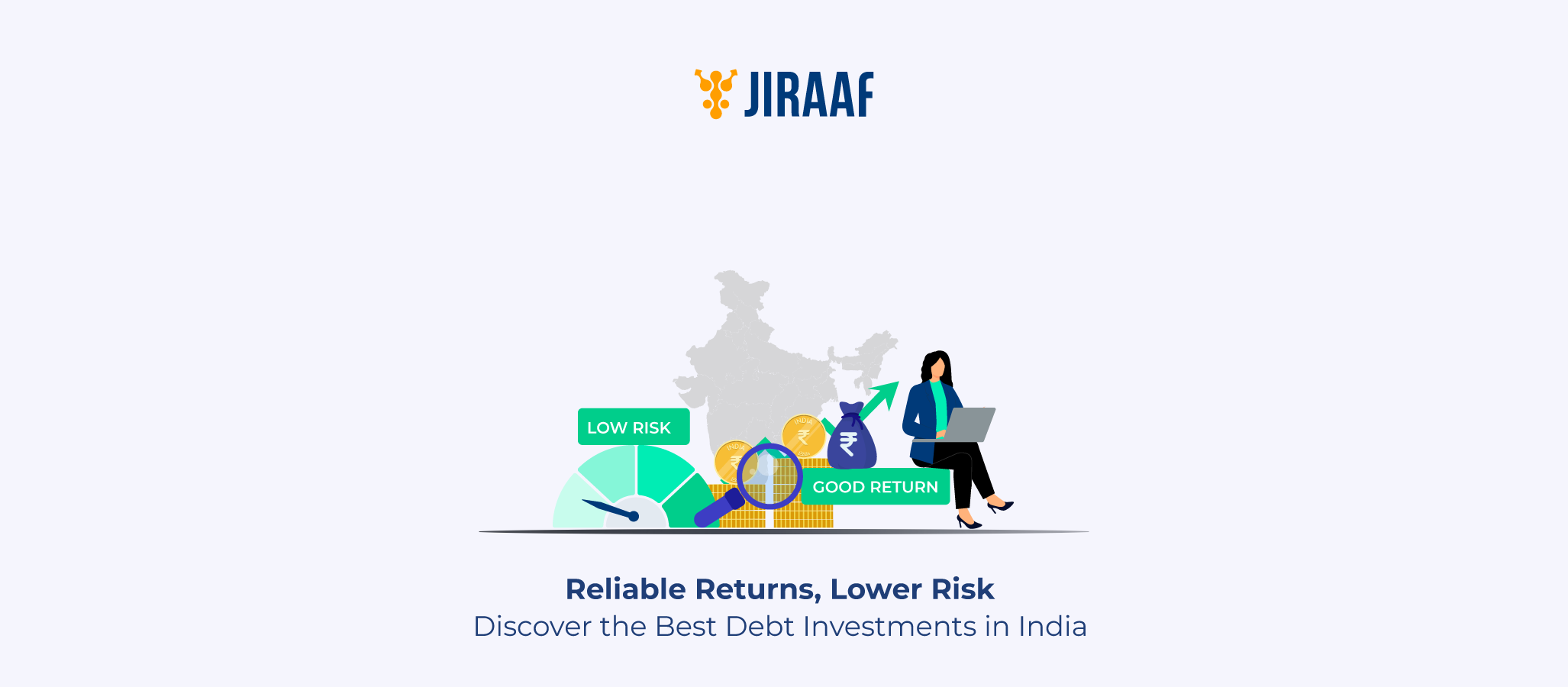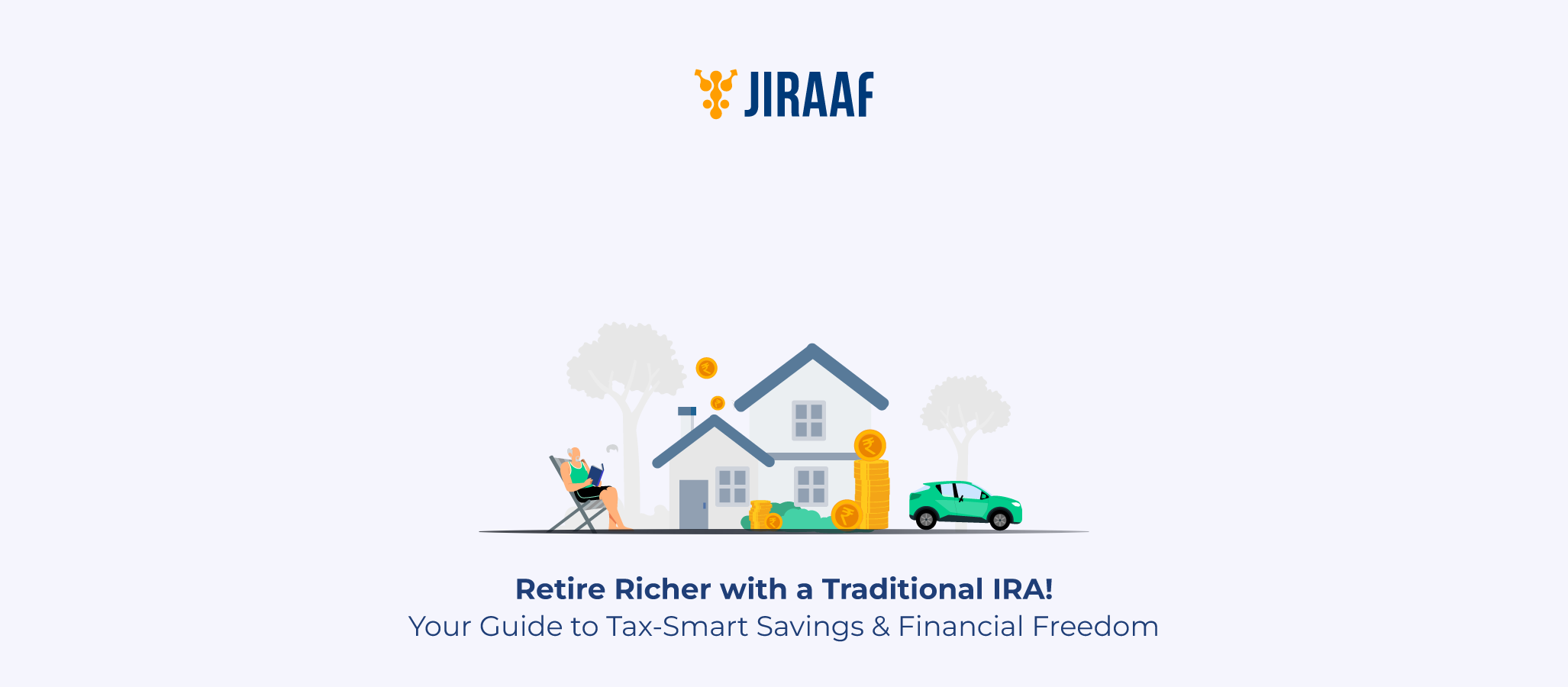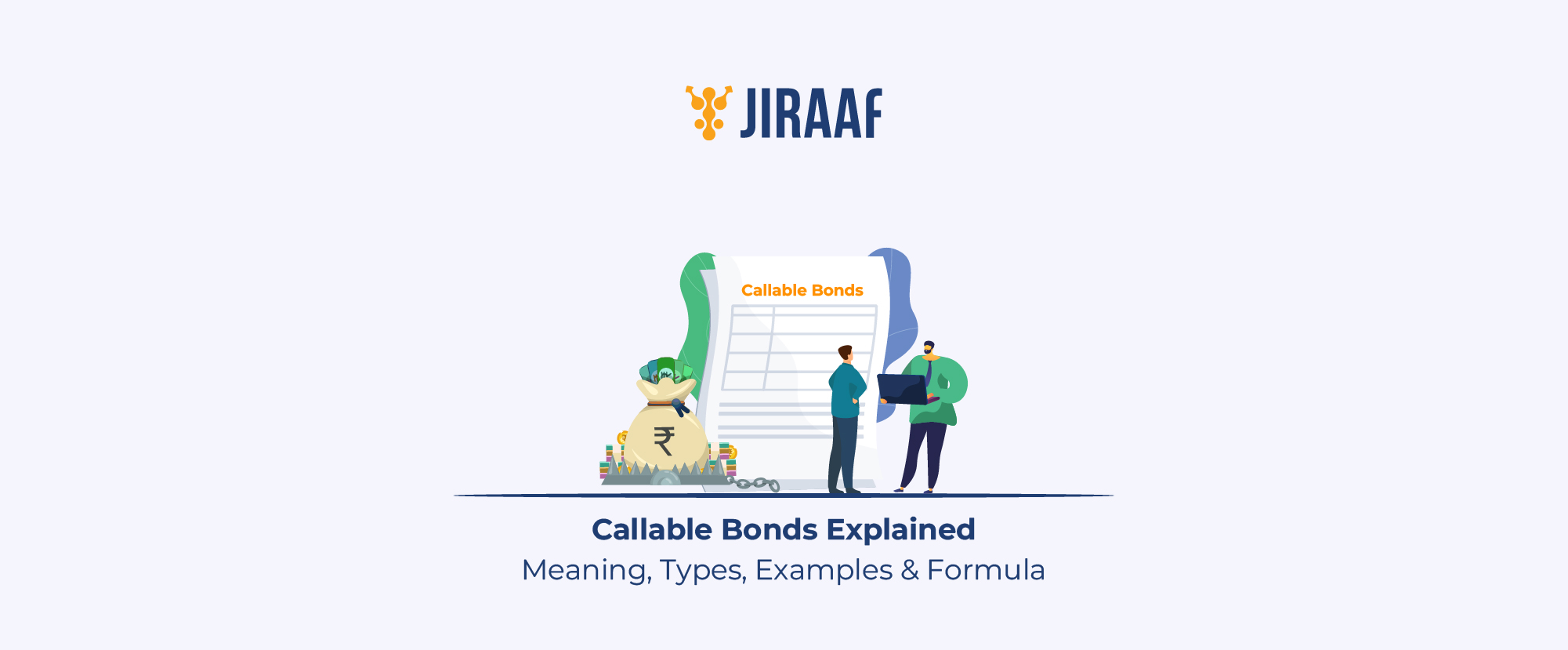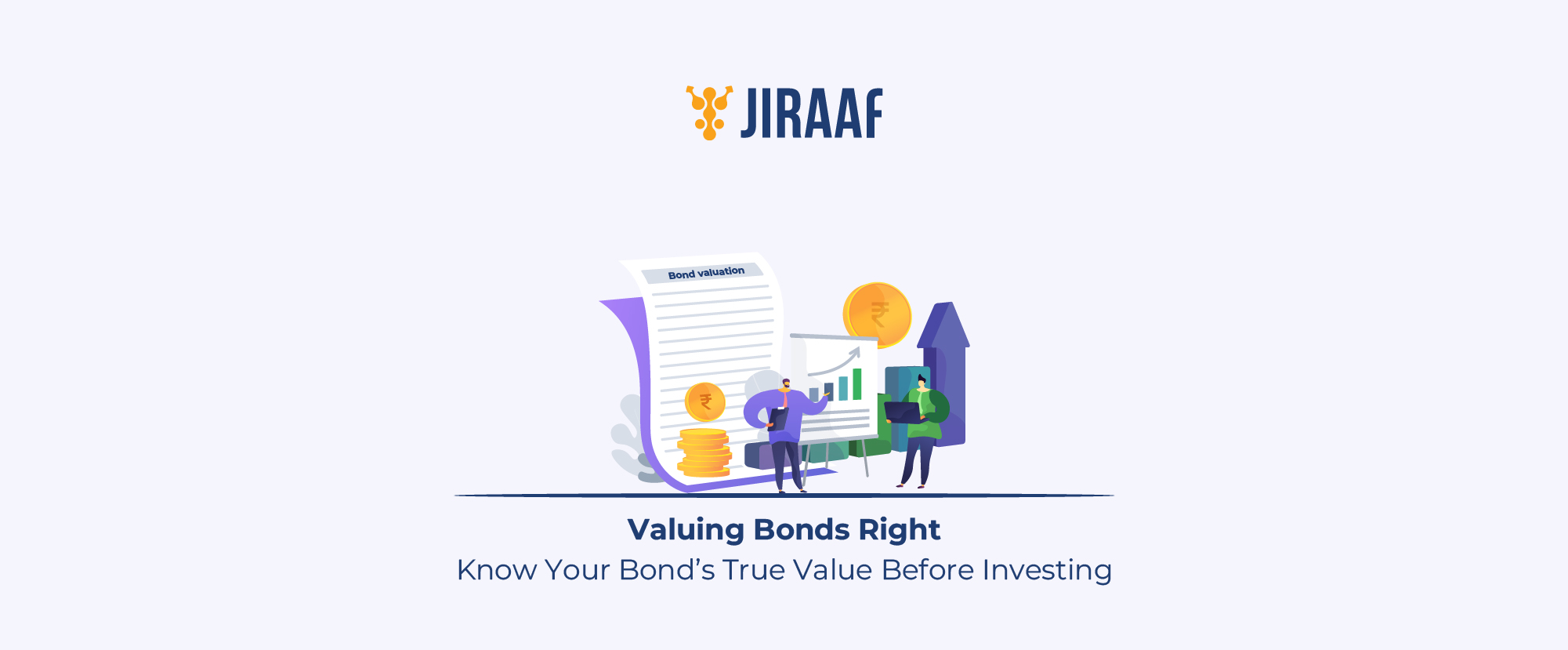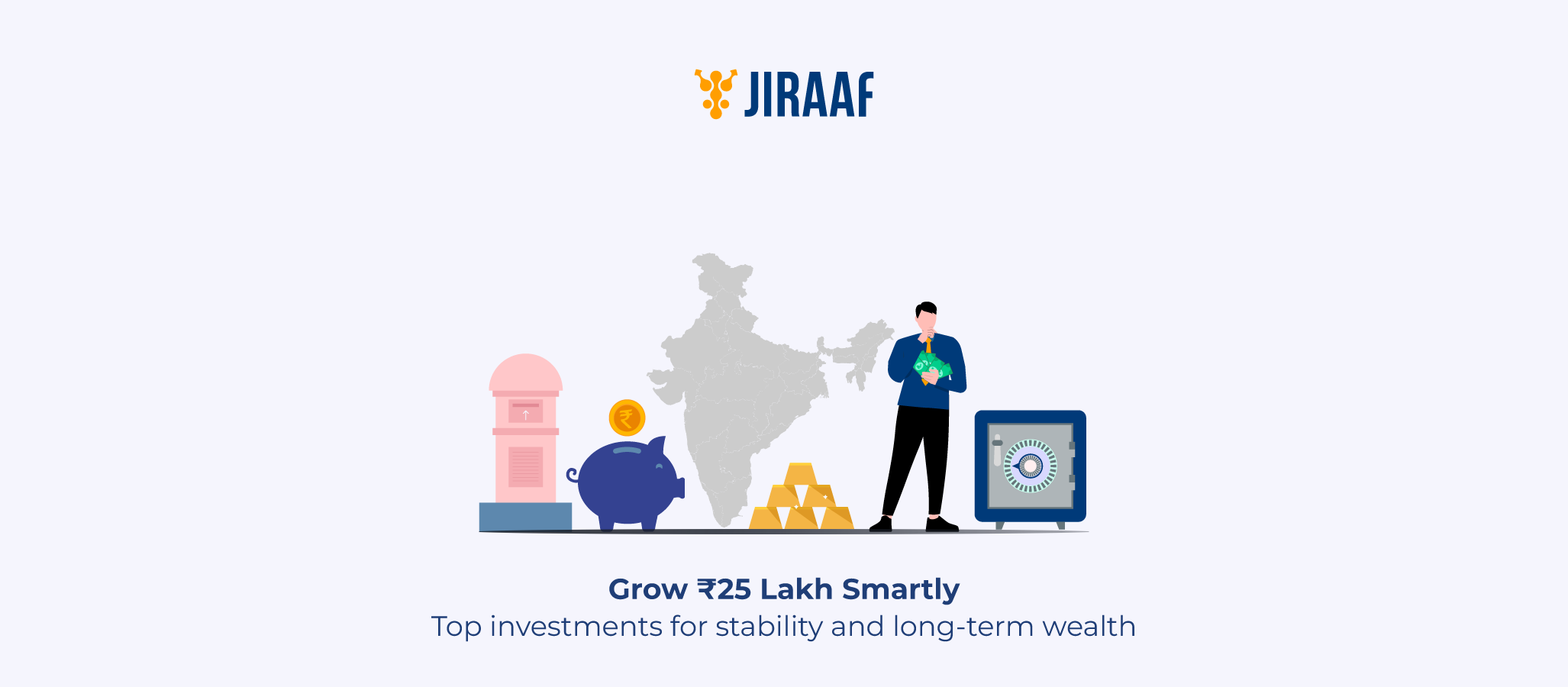When it comes to investing, not every individual is comfortable with the risks of equity markets. Many prefer stability, predictable returns, and capital safety. Debt investments cater exactly to this need—they offer consistent income, lower volatility, and a wide range of options to suit different financial goals.
In this blog, we’ll explore the top 10 debt investment options in India, their features, and who should consider them. By the end, you’ll have clarity on which option best aligns with your financial journey.
Why Choose Debt Investments in India?
Debt investment options in India attract millions of investors every year because they strike a balance between safety and steady growth.
- Stability and Capital Preservation: Unlike equities, debt instruments aim to protect your principal while generating moderate but assured returns.
- Diversification Benefits: They balance out the risks of an equity-heavy portfolio, ensuring stability in market downturns.
- Tax Efficiency: Some debt products, such as PPF, NSC, and certain bonds, offer tax benefits under Section 80C (under the old tax regime), making them more attractive.
- Long-Term Debt Instruments: Most government securities and long-dated bonds have fixed coupon rates and aren’t directly tied to inflation. Their longer tenure can sometimes offer higher yields than short-term options, though not guaranteed to beat inflation.
- Lower Volatility: Returns don’t fluctuate dramatically, giving peace of mind to conservative investors.
With these advantages in mind, let’s explore the best debt investment options in India that combine safety with steady returns.
Top 10 Best Debt Investment Options in India
Debt investments come in many forms—from traditional schemes to modern platforms. Below are the top 10 options you should consider:
Fixed Deposits (FDs)
The most popular and time-tested investment choice, FDs guarantee fixed returns with minimal risk. They suit risk-averse investors who prefer assured returns and the flexibility of premature withdrawal for liquidity needs (with a penalty). Banks and financial institutions offer varied interest rates, depending on the tenure and depositor type, with the rate typically higher for senior citizens.
Public Provident Fund (PPF)
PPF is a government-backed savings scheme that qualifies for EEE (Exempt-Exempt- Exempt) tax benefits, meaning the invested amount, the interest earned, and the maturity proceeds are all tax-free. Investors can claim deductions under Section 80C each year, while enjoying a complete tax exemption on the final payout. The plan also allows loans and partial withdrawals once the initial lock-in period is over, adding flexibility in case of emergencies. With a fixed 15-year tenure that can be extended in five-year blocks, it serves as a disciplined route for steady, long-term wealth creation.
National Savings Certificate (NSC)
NSC is another secure government-backed option available at post offices. It provides guaranteed returns and qualifies for tax deductions under Section 80C. The certificates come in a 5-year fixed maturity period, and features like transferability and nomination add convenience. It is best for conservative investors who want assured, risk-free returns.
Debt Mutual Funds
Debt mutual funds pool money into various fixed-income securities such as corporate bonds, treasury bills, and government securities. Debt mutual funds include liquid funds, short-term funds, and gilt funds. They provide higher flexibility and tax efficiency compared to traditional deposits. However, as an investor, you must be mindful of interest rate risks and choose funds that align with your investment horizon and risk tolerance.
RBI Bonds
RBI Floating Rate Savings Bonds are directly issued by the RBI. They offer a fixed 7-year tenure and interest linked to government rates, making them a safe choice for long-term investors. While the interest is taxable, the security and direct backing by the RBI provide unmatched confidence. They are suitable for those seeking guaranteed returns without market exposure.
Corporate Bonds
AAA-rated corporate bonds are one of the safest ways to earn better returns compared to FDs. They are issued by highly reliable companies and can be invested through platforms like Jiraaf, which curates such high-quality opportunities. These bonds work well for investors looking to diversify while keeping risks low.
Post Office Schemes
India Post offers several small savings schemes such as the Monthly Income Scheme, Kisan Vikas Patra, and Recurring Deposits. They are easy to invest in, widely accessible, and backed by the government. Ideal for rural and semi-urban investors, these schemes cater to those who prefer traditional and reliable instruments.
Senior Citizens’ Savings Scheme (SCSS)
The Senior Citizens Savings Scheme (SCSS), meant for individuals 60 and above, currently offers an attractive 8.2% annual interest—higher than most fixed deposits. Interest is paid quarterly, providing a steady income stream. Investments qualify for deductions under Section 80C, and while the interest is taxable as per the investor’s slab, senior citizens can claim relief under Section 80TTB for interest income up to ₹50,000 each year. SCSS remains a strong, government-backed option for retirement income
Government Securities (G-Secs)
G-Secs include treasury bills, dated securities and many more products. They are considered risk-free as they are backed by the government. The lock-in periods vary depending on the type of instrument, but they are especially suited for institutional investors, high-net-worth individuals, or those who want to balance a portfolio with ultra-safe investments.
Infrastructure Bonds
Infrastructure bonds issued by government-approved institutions offer tax deductions under Section 80CCF up to ₹20,000 per year, in addition to the ₹1.5 lakh limit under Section 80C. These bonds usually have a 5-year lock-in period and provide moderate returns, with interest income taxable as per slab rates. However, this excludes interest from infrastructure bonds. Although less liquid, these bonds suit investors with a longer investment horizon seeking tax savings and portfolio diversification.
Debt Fund Investment Options for Steady Returns
Investors seeking steady yet slightly higher returns can consider debt mutual funds that focus on government securities and AAA-rated corporate bonds. These funds combine safety with moderate growth, making them suitable for medium- to long-term goals. Unlike traditional fixed deposits, they also provide more favorable tax treatment on long-term gains.
Every debt investment carries its own balance of risk and reward. Understanding this balance ensures your money grows steadily while staying aligned with your financial goals.
Risk and Return Analysis of Debt Investments
- Risks: While debt options are safer than equities, they are not risk-free. Risks include interest rate fluctuations (affecting bond prices), credit risk in lower-rated corporate bonds, and liquidity risks in some schemes.
- Returns: Depending on the product, returns range from 6% in conservative FDs to 8–9% in AAA corporate bonds, with added tax benefits in select instruments. On the positive side, debt investments provide predictable, steady returns.
Now that we know the risks and returns, the next question is simple—are debt investments right for you? Let’s find out who can benefit the most.
Who Should Invest in Debt Instruments?
Debt investments are best suited for:
- Conservative investors who prioritize capital safety
- Retirees and senior citizens are looking for a steady income
- Young professionals who want portfolio stability alongside equity exposure
- Tax-saving investors leveraging PPF, NSC, and SCSS
- Diversified investors are balancing high-risk equity with low-risk debt for better wealth management
Knowing who should invest is only the first step—choosing the right instrument is what makes the real difference. With so many options available, the key lies in matching your financial goals with the most suitable debt investment.
Conclusion: Finding the Right Debt Investment Option for You
Debt investments are not just for the risk-averse—they play a crucial role in every portfolio. From traditional FDs and post office schemes to modern corporate bonds and debt funds, each option has its own purpose. For conservative savers, PPF or NSC works best. For retirees, SCSS and RBI Bonds are ideal. For investors seeking diversification and better yields, debt mutual funds and AAA corporate bonds (like those available on Jiraaf) provide balance. Ultimately, the right mix depends on your goals, time horizon, and risk tolerance.
